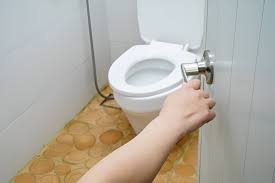A stopped toilet is one of the most common and frustrating plumbing issues homeowners face. Whether it’s due to a clog, a malfunctioning flush mechanism, or a more serious plumbing problem, a stopped toilet can disrupt your daily routine and even lead to unsanitary conditions. In this guide, we’ll walk you through the steps to diagnose and fix a stopped toilet, as well as provide tips to prevent future issues.First, let’s identify the possible causes of a stopped toilet:
- Clogged Drain: The most common cause is a blockage in the drainpipe, often due to excessive toilet paper, non-flushable items, or waste buildup.
- Low Water Level: If the toilet bowl isn’t filling with enough water, it may not flush properly.
- Faulty Flapper or Flush Valve: These components control the flow of water during a flush. If they’re worn out or damaged, the toilet may not flush correctly.
- Blocked Vent Pipe: The vent pipe allows air to enter the plumbing system. If it’s blocked, it can create a vacuum that prevents proper flushing.
Now, let’s explore the steps to fix a stopped toilet:
- Assess the Situation: Before taking any action, determine the severity of the clog. If the toilet is overflowing, turn off the water supply valve located near the base of the toilet.
- Use a Plunger: A plunger is the first tool to try for minor clogs. Ensure you have a good seal around the drain and push down firmly, then pull up quickly. Repeat several times until the water drains.
- Try a Toilet Auger: If the plunger doesn’t work, a toilet auger (or closet auger) can reach deeper into the drainpipe to break up or retrieve the clog.
- Check the Water Level: If the toilet isn’t filling with enough water, adjust the float valve in the tank to increase the water level.
- Inspect the Flapper and Flush Valve: If the toilet flushes weakly, the flapper or flush valve may need replacement. Turn off the water supply, drain the tank, and replace the faulty parts.
- Clear the Vent Pipe: If you suspect a blocked vent pipe, you may need to climb onto the roof and use a plumber’s snake to clear it. This step is best left to professionals if you’re unsure.
To prevent future stopped toilet issues, follow these tips:
- Avoid flushing non-flushable items like wipes, feminine hygiene products, or paper towels.
- Use less toilet paper, especially if you have a low-flow toilet.
- Regularly clean the toilet and inspect the flushing mechanism for wear and tear.
- Consider installing a bidet or wet wipes dispenser to reduce reliance on toilet paper.
In some cases, a stopped toilet may indicate a more serious plumbing problem, such as a sewer line blockage or tree root intrusion. If you’ve tried the above steps and the toilet remains stopped, it’s time to call a professional plumber. They have the tools and expertise to diagnose and resolve complex issues.Remember, acting quickly when you notice a stopped toilet can prevent further damage and costly repairs. With the right tools and knowledge, you can often resolve the issue yourself. However, don’t hesitate to seek professional help if the problem persists.

